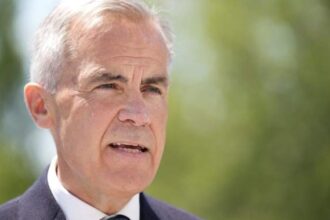In a significant ruling that has reverberated across Alberta’s political landscape, Court of King’s Bench Justice Shaina Leonard granted a temporary injunction Thursday halting the implementation of Bill 22, legislation that would have severely restricted gender-affirming care for transgender youth. The decision marks a pivotal moment in what has become one of the province’s most contentious healthcare battles in recent memory.
The controversial bill, which was scheduled to take effect on July 1, would have prohibited hormone therapy for minors under 16, required parental consent for those aged 16-17, and banned gender-affirming surgeries for anyone under 18. Justice Leonard’s ruling suspends these provisions until a full constitutional challenge can be heard, stating the bill raises “serious issues” that require thorough judicial consideration.
“The evidence clearly establishes that the plaintiffs have demonstrated a serious issue to be tried,” Leonard wrote in her decision, emphasizing that transgender youth could suffer “irreparable harm” if the law were allowed to proceed while constitutional questions remain unresolved.
The legal challenge was brought forward by several organizations, including the Canadian Civil Liberties Association and families with transgender children, who argued the bill violated Charter rights and potentially endangered vulnerable youth. Medical experts testifying during hearings warned that interrupting ongoing treatments could lead to severe psychological distress, increased suicide risk, and other negative health outcomes.
Dr. Margaret Hamilton, a pediatric endocrinologist cited in court documents, explained that “forcing youth to discontinue medically necessary treatments represents a dangerous interference in the doctor-patient relationship that contradicts established medical consensus.”
Premier Danielle Smith’s United Conservative government has defended the legislation as protecting children from making irreversible medical decisions. Health Minister Adriana LaGrange expressed disappointment with the ruling but maintained the government remains “committed to protecting children.”
“We believe parents should be involved in important decisions affecting their children’s health,” LaGrange stated following the ruling. “We are reviewing the court’s decision and considering our next steps.”
The temporary injunction has been celebrated by LGBTQ+ advocacy groups as a crucial reprieve. Kristopher Wells, Canada Research Chair for the Public Understanding of Sexual and Gender Minority Youth, called it “a victory for evidence-based medicine over politically motivated interference.”
According to data presented during the hearings, approximately 1,000 transgender youth in Alberta could have been affected by the legislation. Many families had already been exploring options to relocate to other provinces or seek alternative care arrangements in anticipation of the bill taking effect.
The Alberta Medical Association had previously issued statements opposing the legislation, noting it contradicted clinical practice guidelines established by major medical organizations across North America, including the Canadian Paediatric Society and the American Academy of Pediatrics.
Similar legislative attempts to restrict gender-affirming care have faced legal challenges in several U.S. states, with courts in some jurisdictions similarly blocking implementation pending constitutional review. The Alberta case represents one of the first major legal tests of such legislation in Canada.
Legal experts suggest the case could eventually reach the Supreme Court of Canada, potentially establishing precedent for how transgender healthcare policies are approached nationwide. The full constitutional hearing is expected to take place within the next year, though no specific date has been set.
As Albertans await the next phase of this legal battle, a pressing question remains: in matters of healthcare for vulnerable populations, where should the line be drawn between parental authority, individual rights, and the state’s responsibility to protect its citizens according to established medical standards?


















